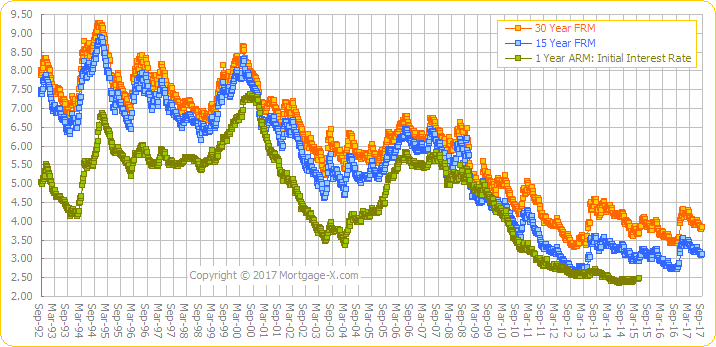We initiated this post on the Belmont Patch and wanted to make sure the residents of Belmont know what their City Council is working on as the newest proposal in keeping Belmont’s residence safe.
I tend to stay away from expressing our opinions about the machinations of Belmont’s City Council but I thought their recent proposal which burdens every home seller with a sewer lateral inspection and repair requirement needs some public scrutiny.
What is a sewer lateral?
It’s the underground pipe that runs from your home to the public sewer system.
What’s the issue?
In some cases, the sewer lateral can leak or even break causing sewage to seep into the ground—similar as to a leach field used in septic systems but not as sanitary. It also has the unwanted effect of possibly allowing ground water (from rain for example) to enter the sewer system which can overburden the system.
What’s the Fix?
First, you have to learn if you have a faulty sewer lateral. There is a relatively inexpensive smoke test which Belmont has been employing to detect faulty sewer laterals. The more expensive way to discover this is through a field test with a camera which is snaked through your sewer line to detect visible deficiencies.
How much does it cost if I need to repair my sewer lateral?
That depends. An short run and easy fix from your home to the street might cost under a thousand dollars but could also reach ten times that amount if there are difficulties in reaching the sewer lateral or, as in the case of many Belmont homes, the sewer lateral has a very extensive run across multiple properties before it reaches the main city sewer line.
What the City of Belmont is considering:
The Belmont City Council has been deliberating whether or not to force each homeowner to perform a test and if necessary repair the sewer lateral before they can sell their home. That proposal is called a “point of sale” or POS proposal.
What’s the problem with their proposal?
There are several issues with this approach which could cause a homeowner a problem should they need to sell their home and either not have the funds to repair the sewer lateral, or not have the time before the close of escrow. Amendments to this proposal include ways a homeowner could negotiate with a buyer to inherit the burden but so far the proposed workarounds appear to be at odds with lending and escrow institutional requirements.
What’s the answer?
The City of Belmont is currently testing sewer laterals utilizing a smoke test which offers the added benefit of detecting downspouts that may be discharging roof runoff into the sewer system rather than the storm drains. Should they find a leak they could then require the homeowner to repair their sewer lateral and have the opportunity to secure financing if needed.
The POS proposal seeks to limit the sewer lateral test to a relatively small subset of homes—only those which sell in a given year, which in 2012 was only 236—while the easily performed smoke test could potentially reach far more homes.
One wonders if the city is truly interested in fixing the sewer lateral problem or pushing it off onto those who will have little voice in the next election—those selling their home and moving away.
UPDATE–I attended the meeting with the Belmont staff and council on Thursday, the 14th to hear their newest idea of the Point of Sale requirement for sewer laterals. Be clear, the City Council has directed the staff to discuss how to best implement the POS, not whether or not the POS is the best way to deal with the issue.
Clearly there is a need to repair broken sewer lateral lines in our city. Having sewage seep into the surrounding ground is not ideal, but the larger problem appears to be the amount of water which enters broken sewer laterals during and after heavy rains. This water then ends up taxing an already overburdened treatment system and anyone who lives in Belmont knows the cost of maintaining our sewer system keeps getting passed along in the form of rate increases on our property tax bills.
But is it leaking water into our sewer laterals which is the major culprit or is it the city’s very own main lines? The smoke tests which the city has been performing clearly revealed one of the greatest issues are folks who have tied their downspouts into the sewer system rather than divert the water to run down the curb and into the storm drain. So again we question, are we moving forward armed with all of the information we need or just moving forward to give the impression we’re making progress?
The rainy season is almost over and we’d suggest the council, which appears ahead of their skis right now, take a step back and get more information and input before storming ahead. Gathering more information from lending institutions, title companies and plumbing contractors who specialize in sewer lateral replacement might prove to be a good start. Having the city deliver the results of their smoke testing to the public for scrutiny might also show some good faith that these decisions are based on solid data; then set a date for action prior to next years’ rainy season.
The question of course today is why a POS vs. requiring each property owner to test and fix their sewer laterals? If the City Council is truly concerned about fixing the issue, a POS requirement severs to only uncover a small percentage of the defective sever lateral lines—commensurate with home many homes sell each year. Since it’s an election year, this seems a politically palatable way to deliver bad news—only those moving would be affected by the cost (estimated to average $7,500 per household). But is it the best answer to the problem? Probably not.
If the council is truly concerned with the health and safety of its citizens it might continue down the path of requiring each and every homeowner to remedy this situation independent on whether or not they are moving. I’m struggling with this but the only reason I can see for not requiring every homeowner to repair their lateral is it would be politically unfavorable.
If the City Council has its way a POS would be eminent. The staff has been directed to develop a step-by-step plan for administrating this new burden. The proposal, if I can paraphrase it and as it stands now, is before a home could be transferred, it would need to have a certification the sewer lateral is intact. That encumbers the homeowner to order and pay for a sewer lateral camera inspection costing about $150-$200 dollars depending upon ease of access. The results of the test and camera footage shall be delivered to the public works department for analysis—promised not to take more than a day or two. If your sewer lateral passes, you get to pass “GO”. If not, you will be required to fix it and provide a certification to the city prior to the close of escrow. Of course the city will have its hand out for encroachment permits, building permits and so forth and they’ve offered no proposed relief on these fees in order for homeowners to comply. Or, the third option presented on Thursday, was that the buyer of the property could sign a pledge to repair the sewer later at their expense with 180 days of closing—and deliver a deposit as security of performance—an amount which has yet to be determined.
Of course this will raise all sorts of red flags for lenders, who if they get wind this requirement exists, will force the repair of the sewer lateral prior to the close of escrow as part of a lending requirement. So while we applaud the city staff for attempting a workaround, their third prong option still has some kinks in it. Namely that once the seller and buyer negotiate who will pay for this repair those negotiations will become part of the contract—the very contract the lender will scrutinize and thus require a sewer lateral certification before they will lend on the property.
As REALTORS, we’re used to handling city issues in the form of disclosure such as the new smoking ordinance, school boundary issue, or even dog and alarm licensing requirements so this newest burden which the city apparently feels we are fighting just for the sake of having to do less work, is really a non sequester for us. What this will burden is the home sale transaction—the seller and the buyer—to find a way to appease the city’s new requirement without unwittingly defrauding the lender at the same time.
The views expressed here are my own–Drew Morgan and not necesarily the views of the National Association of REALTORS, The California Association of REALTOS, The San Mateo Association of Realtors or even my wife.




